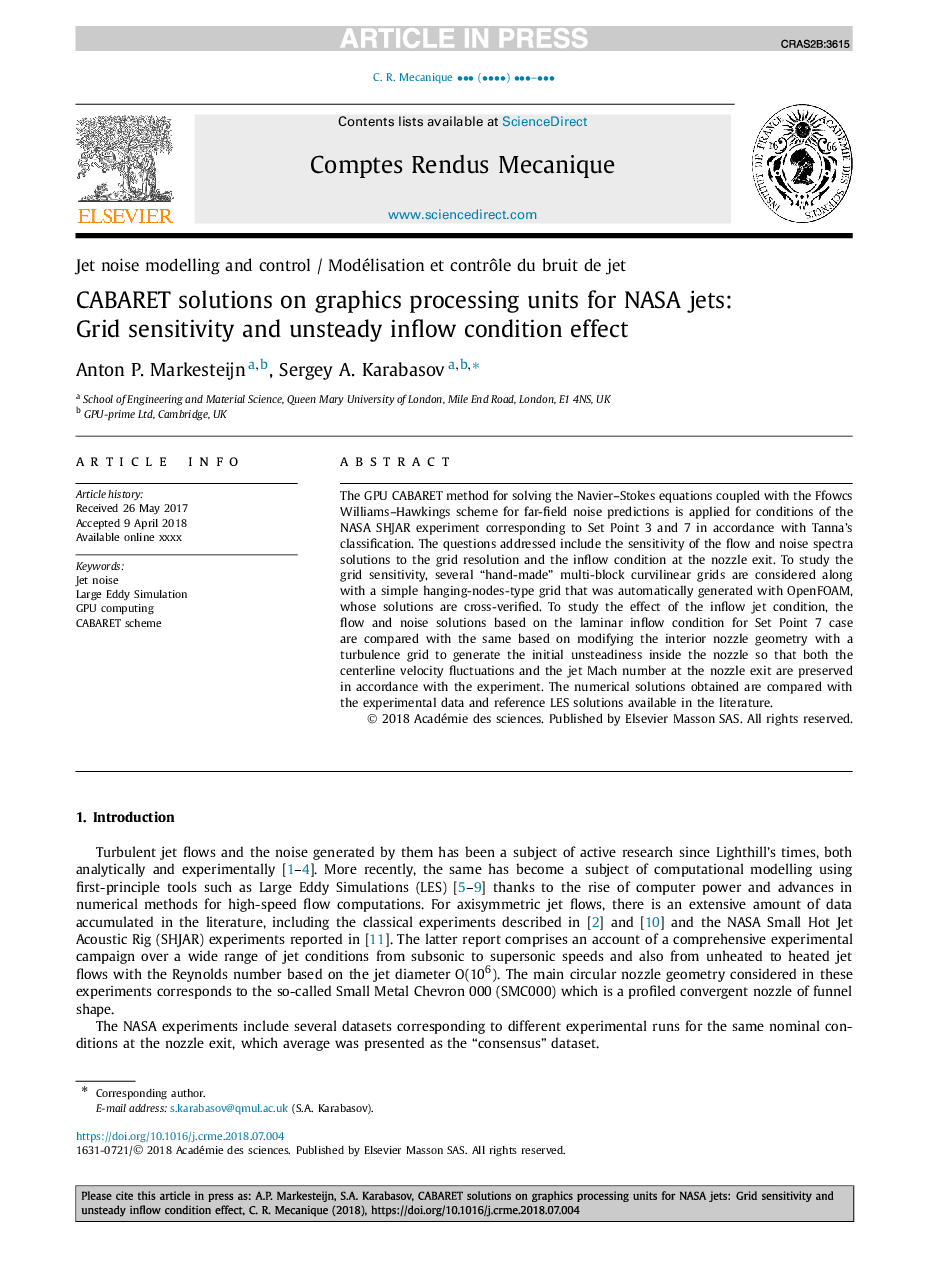| Article ID | Journal | Published Year | Pages | File Type |
|---|---|---|---|---|
| 10226572 | Comptes Rendus Mécanique | 2018 | 16 Pages |
Abstract
The GPU CABARET method for solving the Navier-Stokes equations coupled with the Ffowcs Williams-Hawkings scheme for far-field noise predictions is applied for conditions of the NASA SHJAR experiment corresponding to Set Point 3 and 7 in accordance with Tanna's classification. The questions addressed include the sensitivity of the flow and noise spectra solutions to the grid resolution and the inflow condition at the nozzle exit. To study the grid sensitivity, several “hand-made” multi-block curvilinear grids are considered along with a simple hanging-nodes-type grid that was automatically generated with OpenFOAM, whose solutions are cross-verified. To study the effect of the inflow jet condition, the flow and noise solutions based on the laminar inflow condition for Set Point 7 case are compared with the same based on modifying the interior nozzle geometry with a turbulence grid to generate the initial unsteadiness inside the nozzle so that both the centerline velocity fluctuations and the jet Mach number at the nozzle exit are preserved in accordance with the experiment. The numerical solutions obtained are compared with the experimental data and reference LES solutions available in the literature.
Related Topics
Physical Sciences and Engineering
Engineering
Engineering (General)
Authors
Anton P. Markesteijn, Sergey A. Karabasov,
